Scheurich
W. German Pottery Vase in Light Brown "Foligno" Decor - Form 289-27 - Scheurich - c1970s
W. German Pottery Vase in Light Brown "Foligno" Decor - Form 289-27 - Scheurich - c1970s
Couldn't load pickup availability
This exquisite Scheurich 289-18 "Foligno" vase, standing 27 cm tall, embodies the serene beauty of mid-century design. With its light-brown tones and delicate hand-painted leaf motif, this vase blends the natural aesthetic of majolica with a sleek, modern finish.
Crafted with fine stoneware in West Germany during the golden era of ceramics, it reflects Scheurich’s commitment to high-quality production and artistic innovation. This Foligno vase captures the aesthetic ideals of mid-century modernism, with a blend of form and function, and stands as a perfect example of Scheurich’s commitment to artistic innovation. Whether displayed solo or as part of a collection, this vase makes a bold statement and infuses any interior with timeless style.
Perfect for displaying flowers or standing alone as a decorative piece, this vase will infuse any space with timeless style and understated elegance. Its organic design and substantial craftsmanship make it a standout example of mid-century modernism’s harmonious blend of form and function. Whether as part of a collection or a centrepiece, this vase offers both aesthetic and practical appeal for your home.
- Material: Ceramic
- Model: Scheurich 289-27
- Pattern: "Foligno" in Light Brown
- Style: Mid-Century Modern
- Technique: Hand-glazed
- Place of Origin: Germany
- Mark: W. Germany 289-27
- Date of Manufacture: 1970s
- Condition: Perfect condition
Dimension:
Height: 27 cm | 10.6 in
Diameter: 11 cm | 4.3 in
Weight: 0.9 kg
Share
- Worldwide Shipping
- Secure Packaging
- Loving Curation
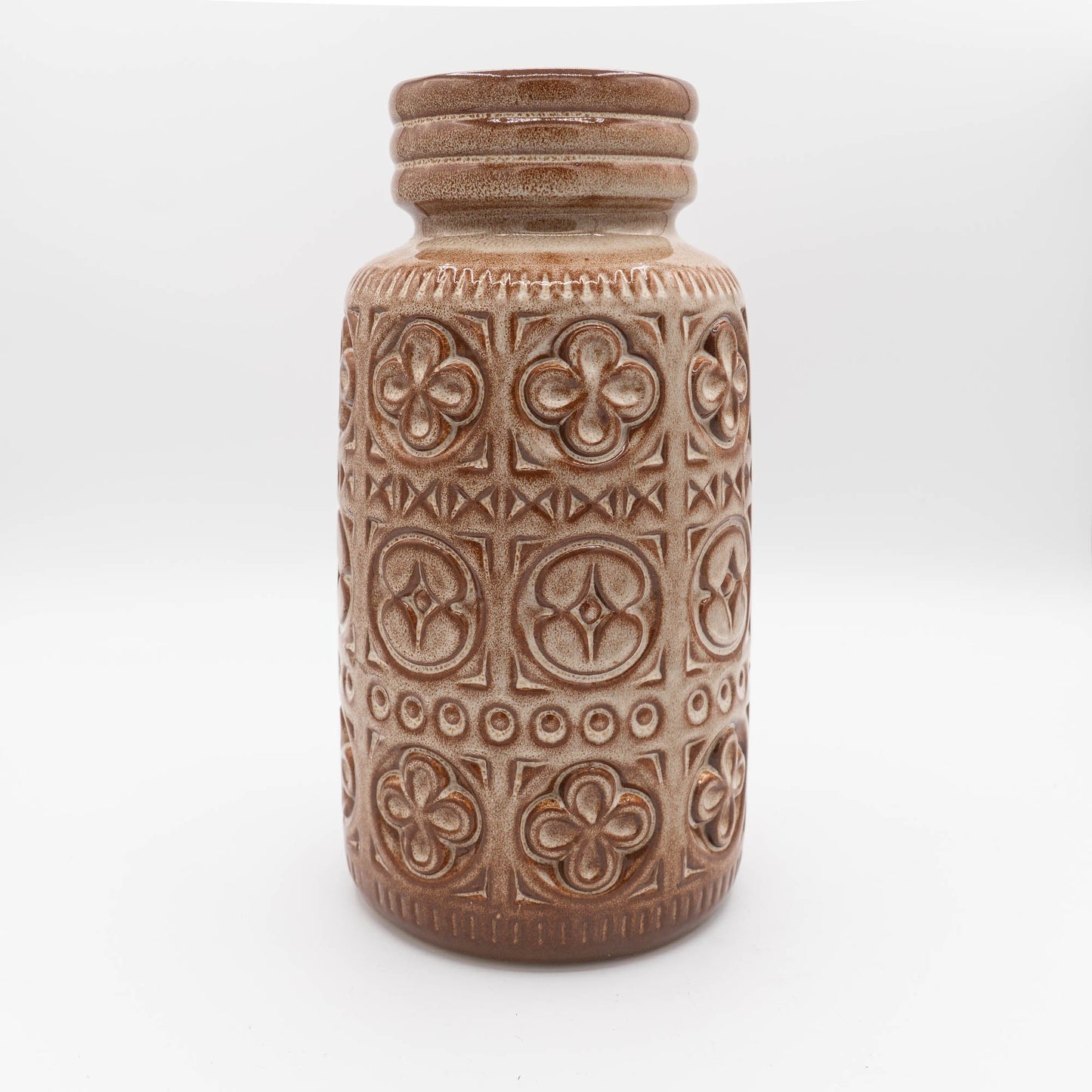
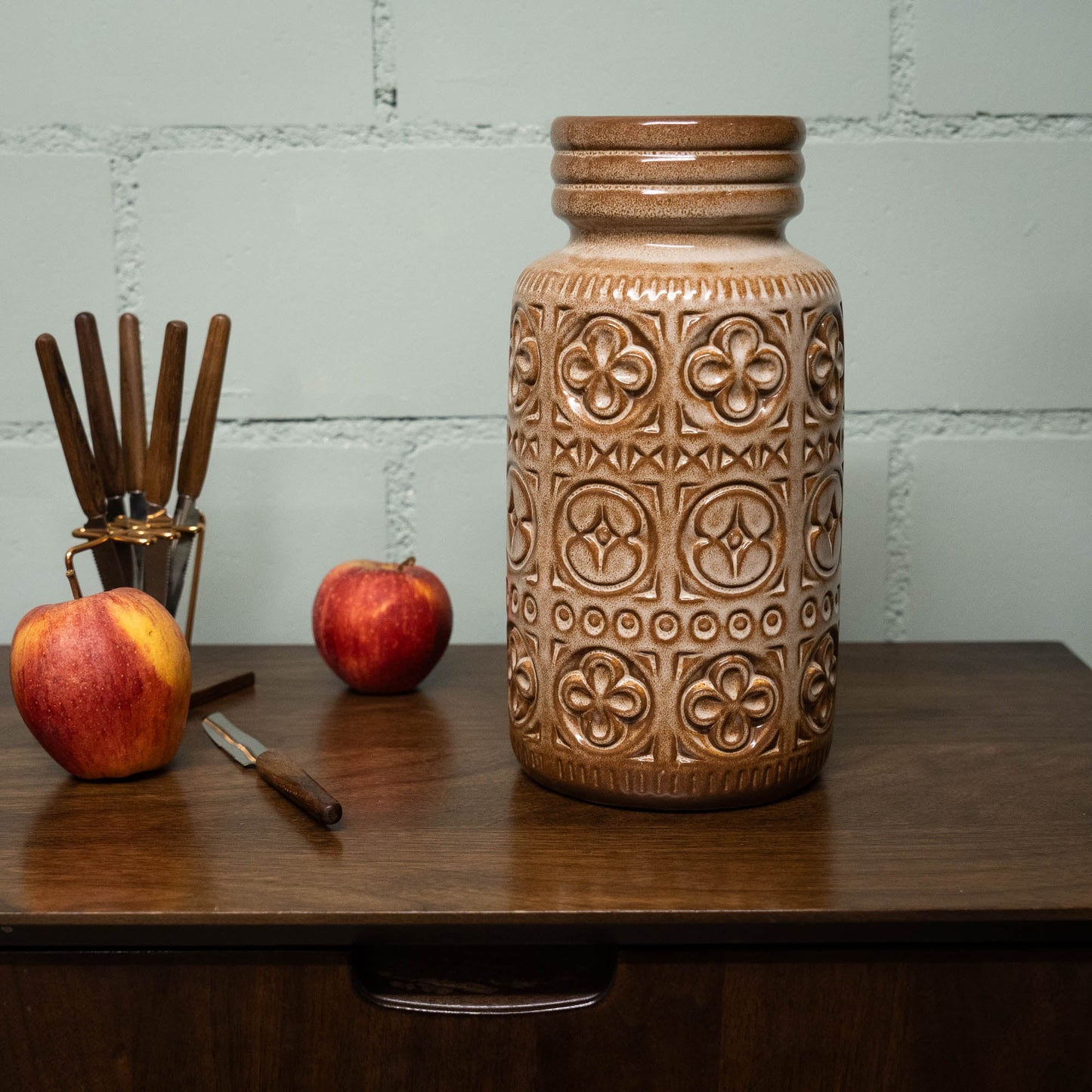
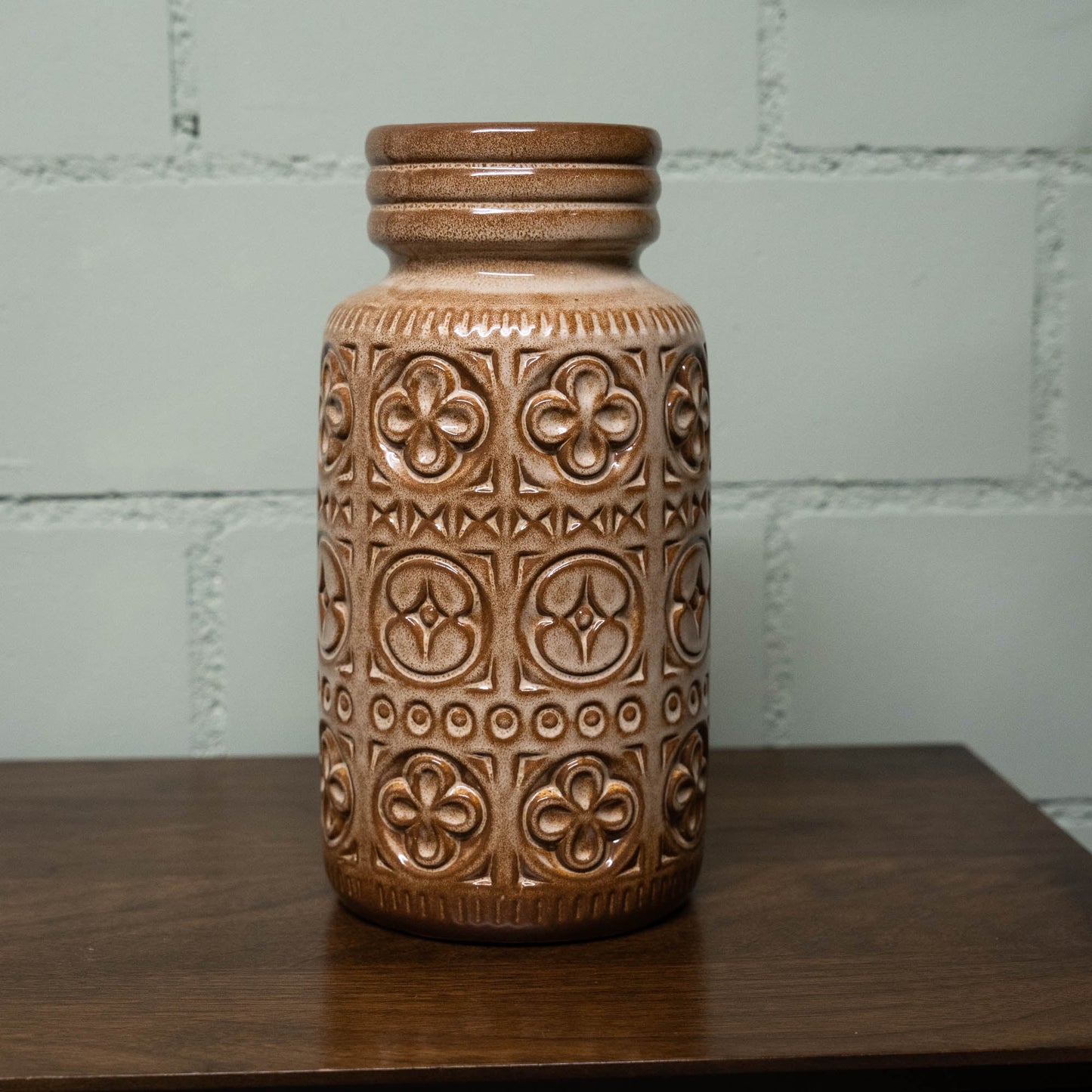
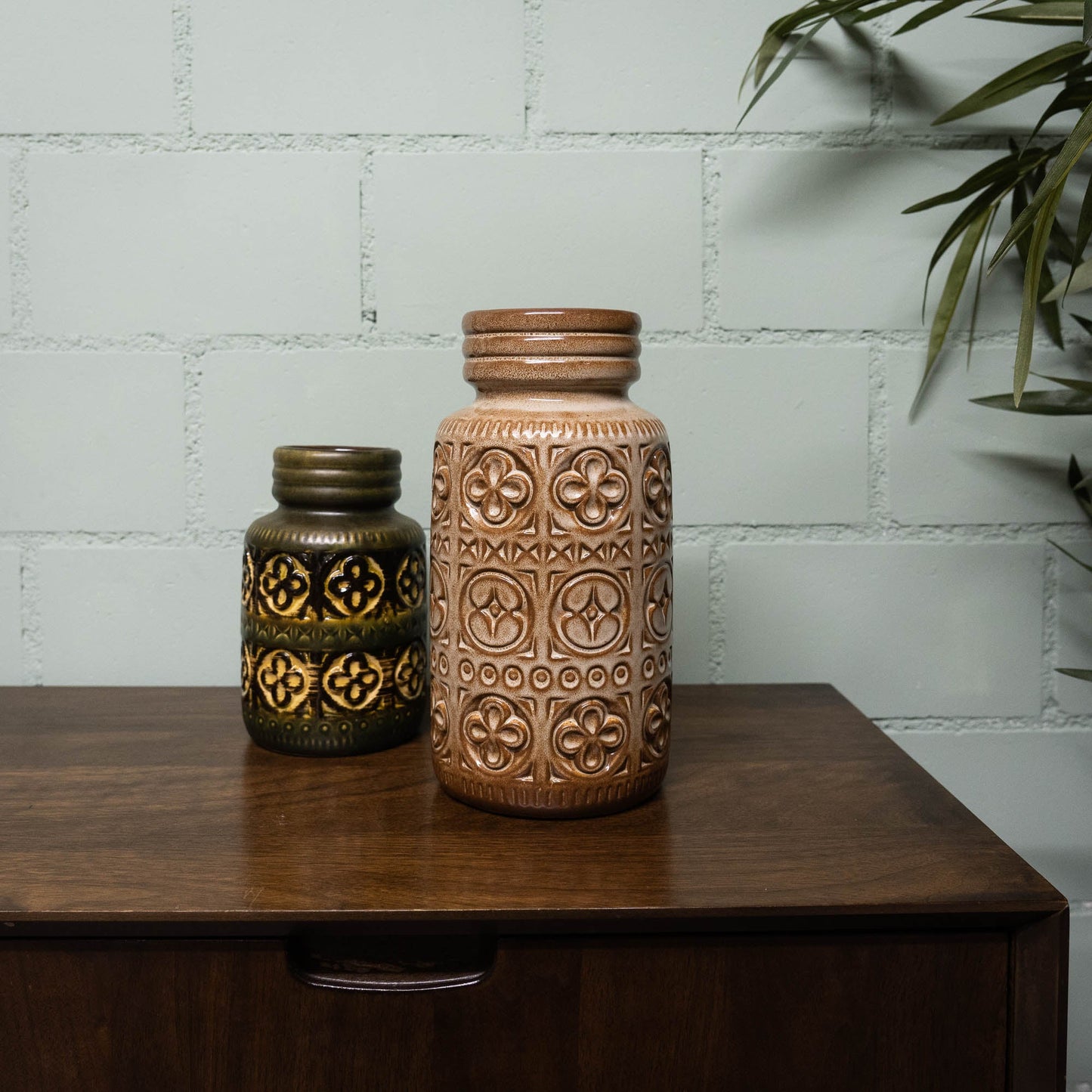
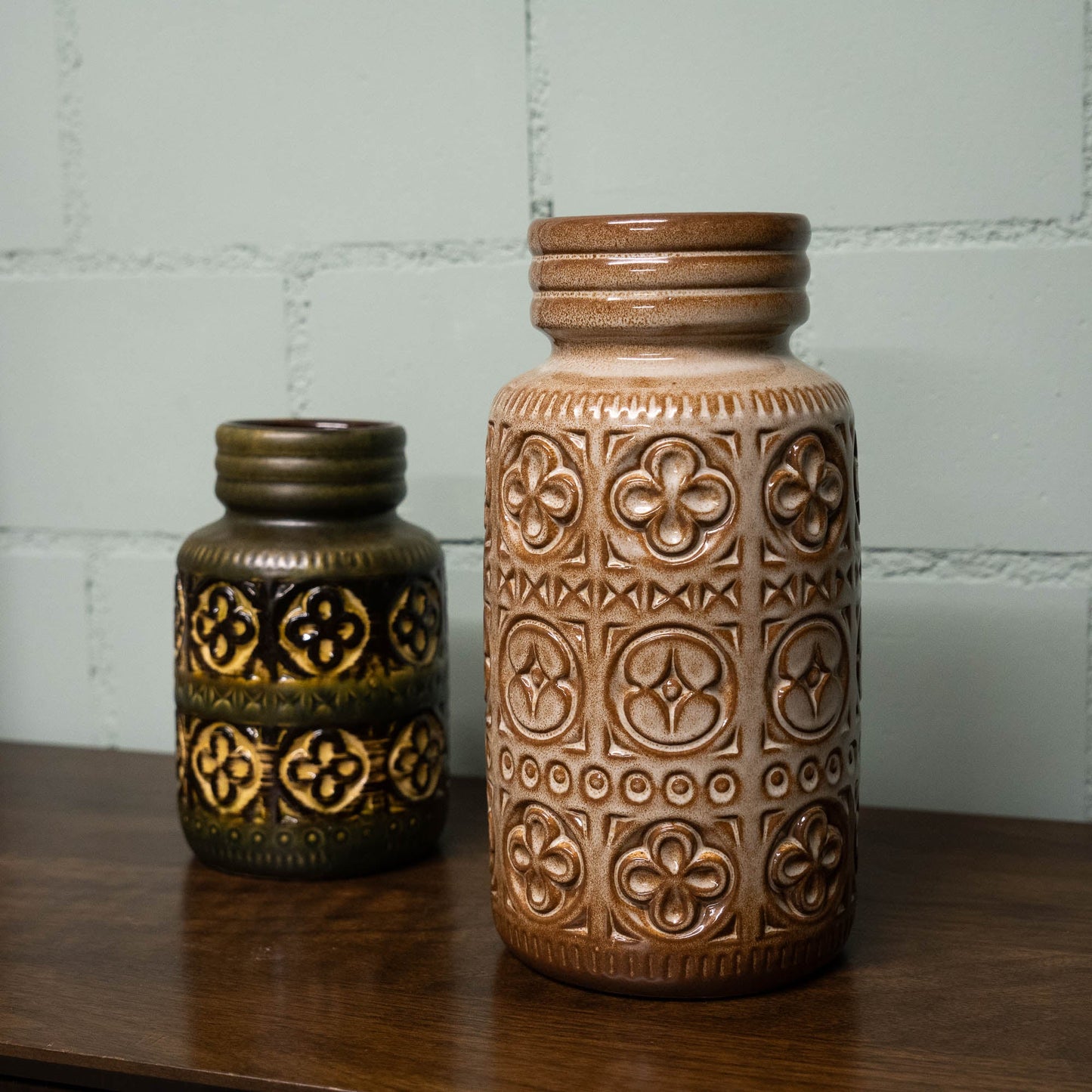
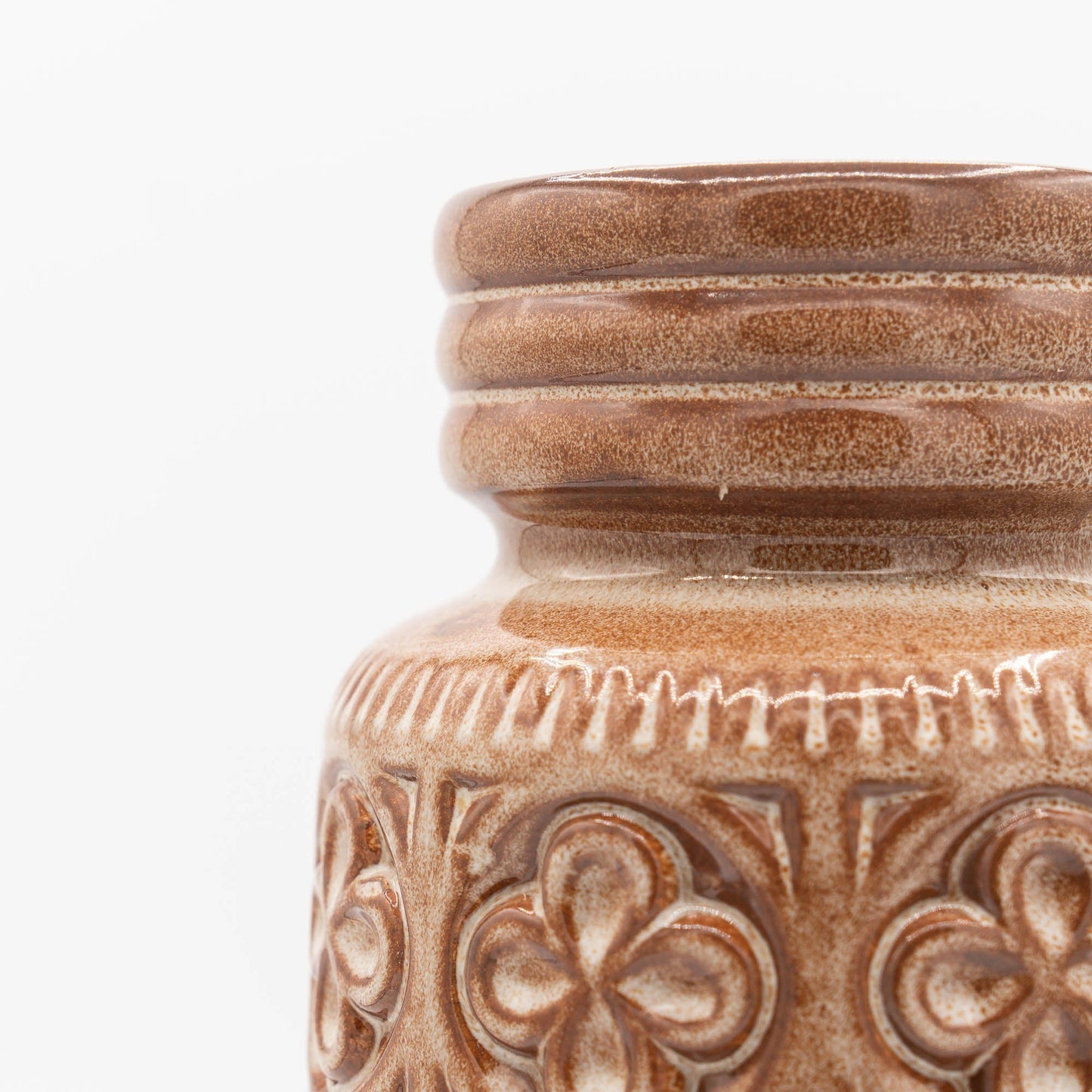
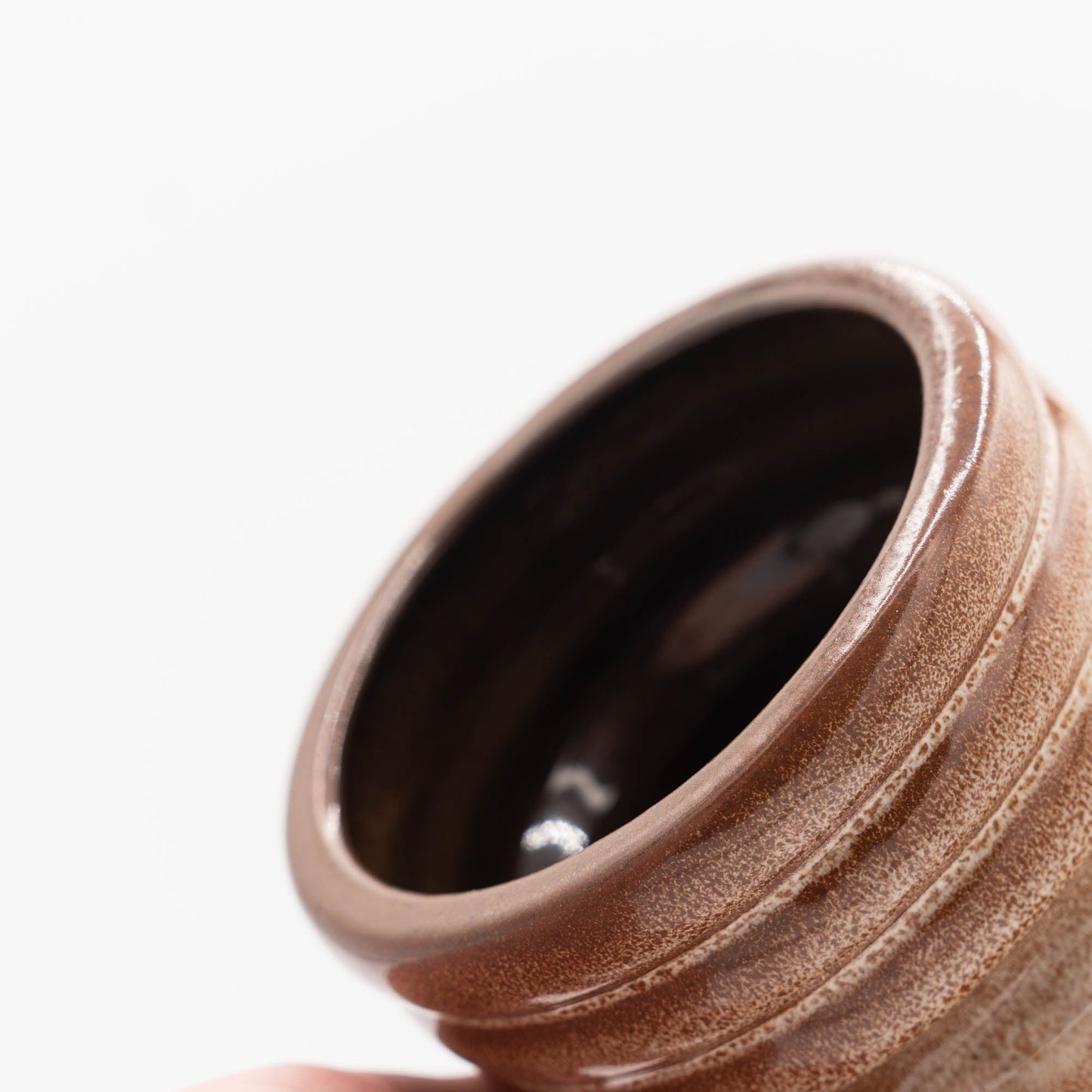
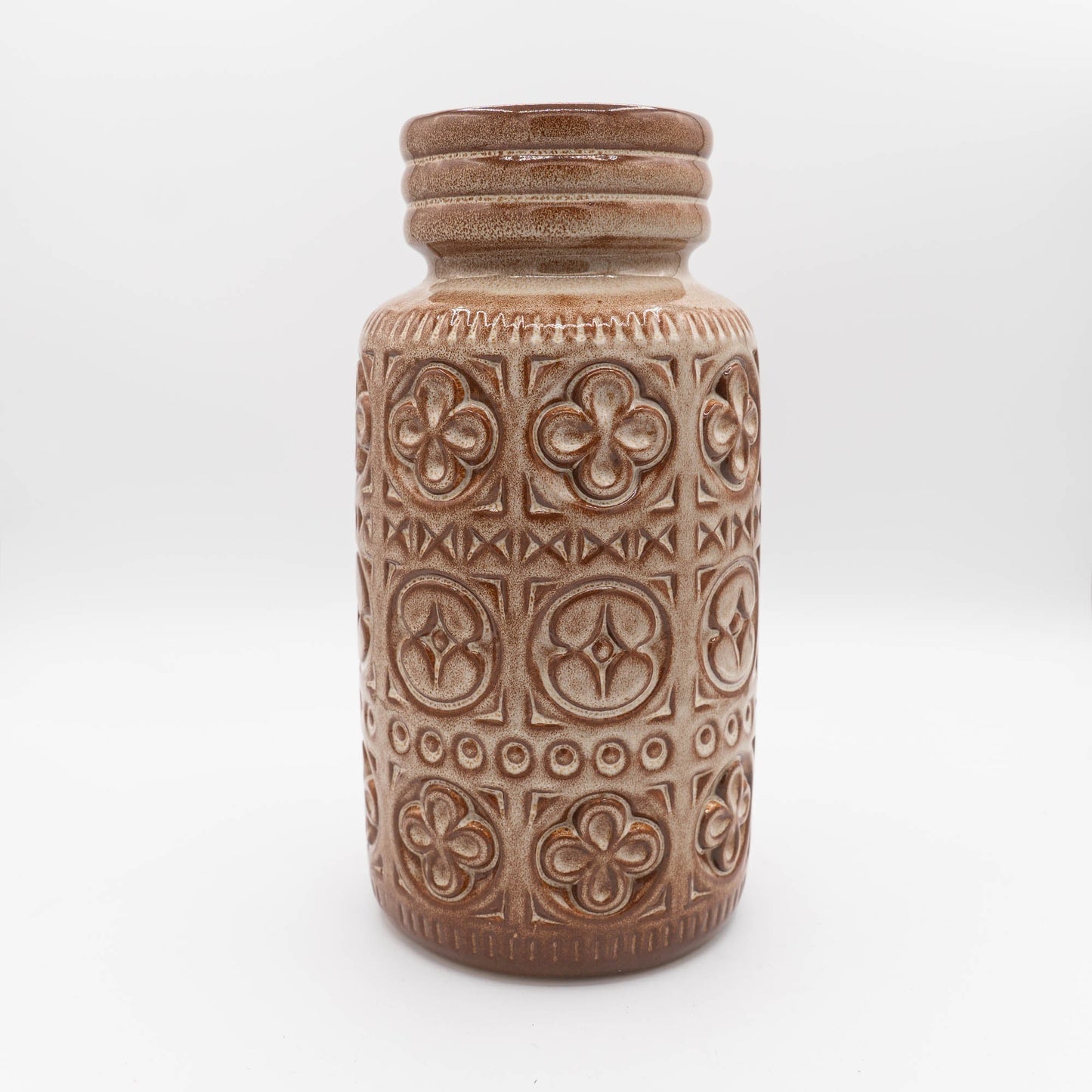
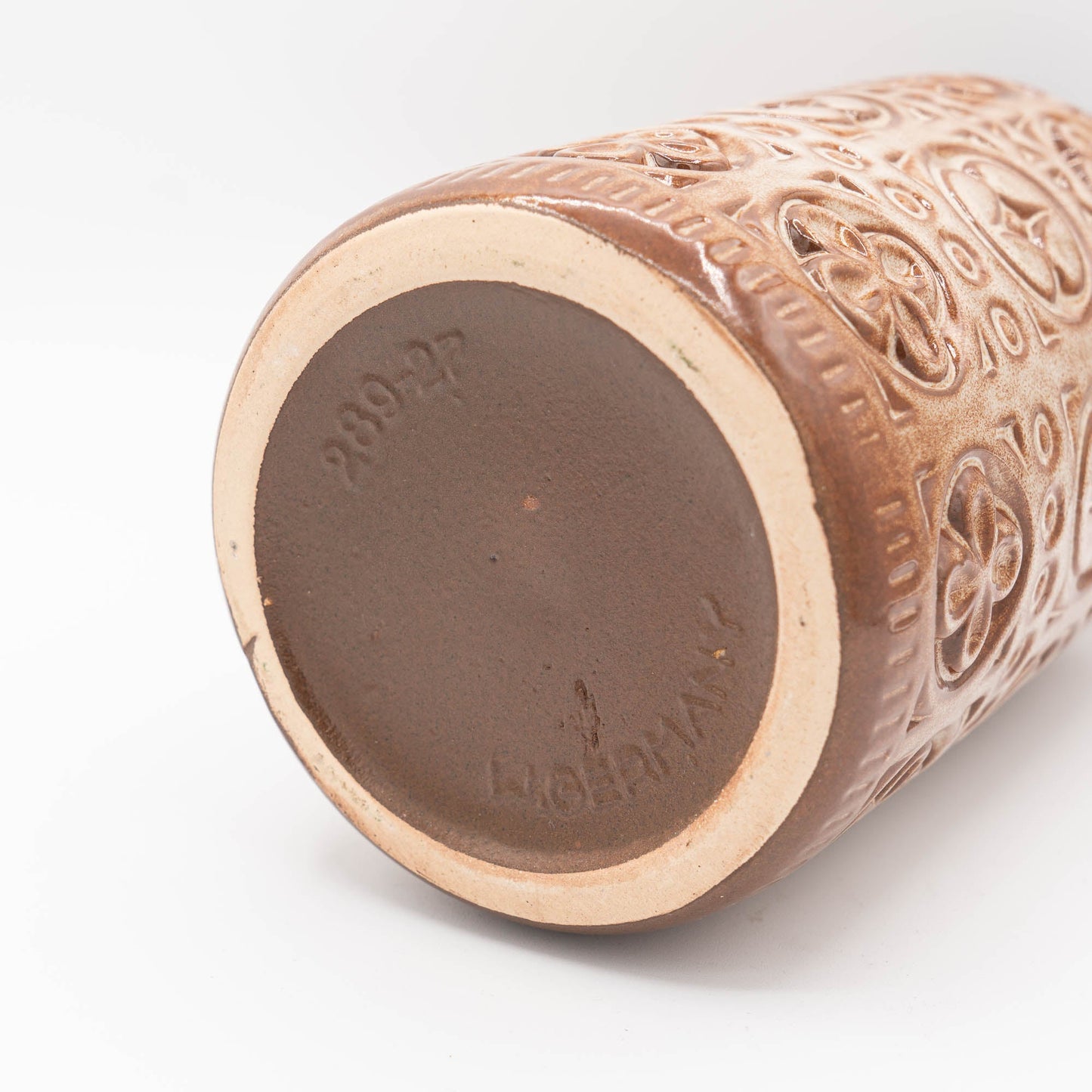
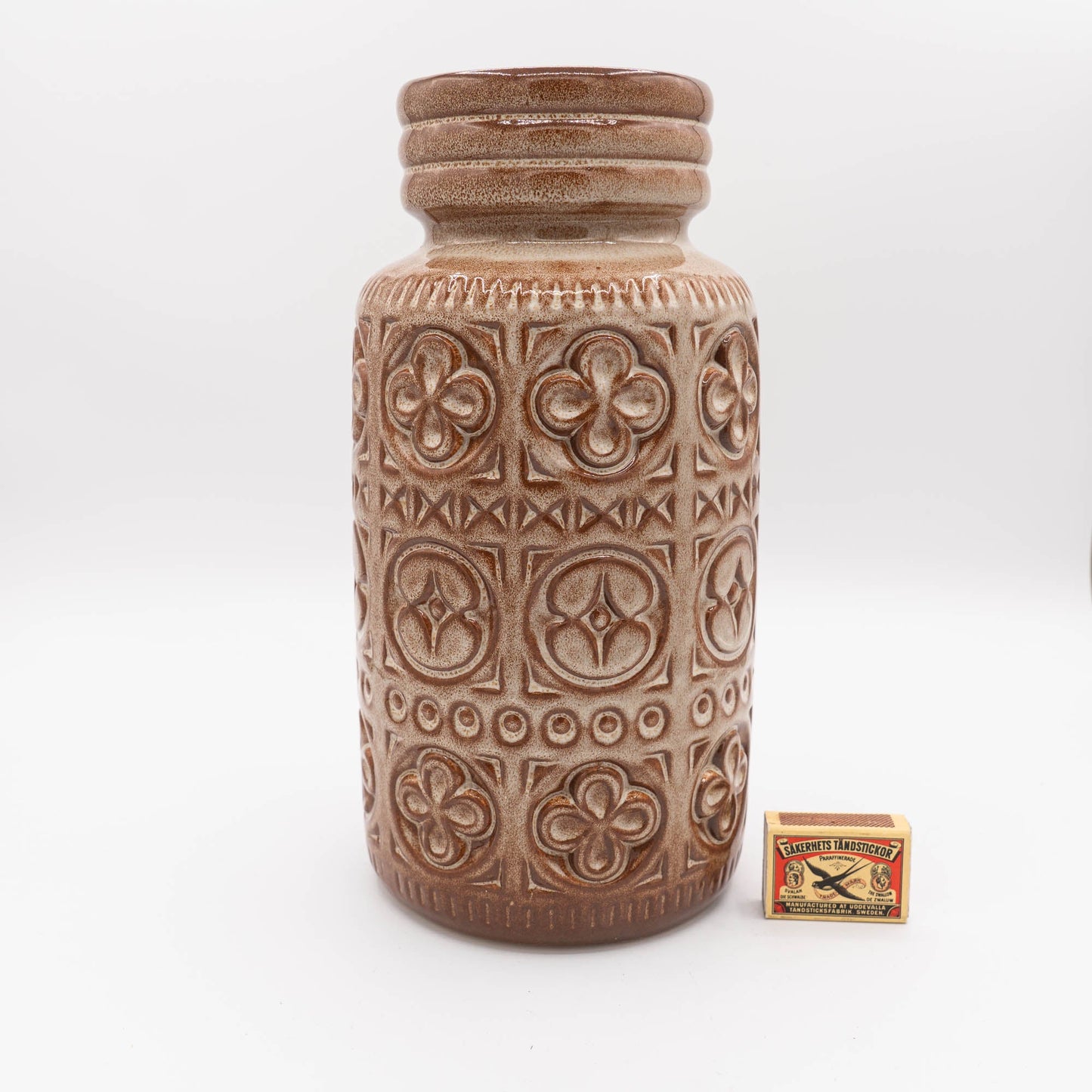
Origin & Maker
Scheurich, one of the most prominent names in West German pottery, was founded in 1928 and rose to fame during the mid-20th century. Known for its production of affordable yet high-quality ceramics, the company became a key player in the "Fat Lava" movement of the 1960s and 70s, characterised by bold textures and glazes. Scheurich’s extensive range of forms and designs, such as the popular "Form 242," showcased both hand-painted and moulded motifs, appealing to a wide audience. Their use of vivid colours, tactile surfaces, and intricate glazes made their pieces highly collectible today. Among their distinctive works, many vases, planters, and jugs are finished with deep, volcanic-like textures, giving them a timeless appeal.
One of the reasons for Scheurich's enduring success was their ability to innovate while maintaining affordability. Their design approach often drew inspiration from nature, incorporating organic shapes and motifs, with some pieces reminiscent of majolica in their glaze techniques. The company remains a celebrated name among collectors of mid-century and West German pottery, with many pieces, especially from the "Fat Lava" era, still in high demand.
Blog posts
View all-

A Serendipitous Morning at the Rue de Bretagne ...
There are few joys in life that match the thrill of stumbling upon a hidden treasure, and for me, flea markets hold that magical allure. One of my favourite flea...
A Serendipitous Morning at the Rue de Bretagne ...
There are few joys in life that match the thrill of stumbling upon a hidden treasure, and for me, flea markets hold that magical allure. One of my favourite flea...
-

Emile Bourgeois and "Le Grand Dépôt" in Paris
Recently, I found this stunning Sarreguemines wash set. It was at the Brocante in Belfort, France. On this day, we had got up at 4 AM to be there in...
Emile Bourgeois and "Le Grand Dépôt" in Paris
Recently, I found this stunning Sarreguemines wash set. It was at the Brocante in Belfort, France. On this day, we had got up at 4 AM to be there in...
-

The Legacy of Robert Haviland: A Journey from N...
The story of Robert Haviland porcelain is one of artistry, transatlantic ambition, and enduring heritage. It begins in the mid-19th century when David Haviland, an enterprising New Yorker, founded Haviland...
The Legacy of Robert Haviland: A Journey from N...
The story of Robert Haviland porcelain is one of artistry, transatlantic ambition, and enduring heritage. It begins in the mid-19th century when David Haviland, an enterprising New Yorker, founded Haviland...













